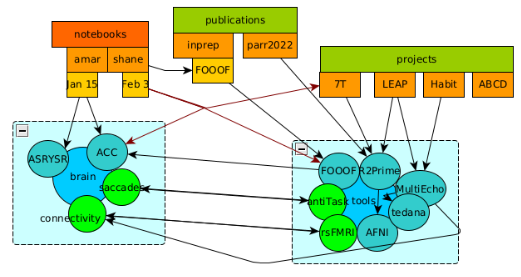LNCD Home
This is the Wiki (tool) for the Laboratory of Neurocognitive Development. While many pages are public, the site is primarily an internal resource. You will need to login to access some areas.
If you're new here, see Start in the lab and Undergrad Resources
Otherwise, you probably want to jump to your space in Notebooks, update Current Projects in the Lab, or annotate Administration changes (eg. IRB Approvals, RA Protocols). yyyy-mm-dd date annotations in any of the wiki's text are collected in Wiki Log.
The top left search input field is able to look through the full text of the entire wiki. It's a great place to start when you're looking for something specific not on the sidebar.
For a deep dive, see the automatically generated sitemap to list all pages or the annotated Wiki Map Description.
Available Datasets has a giant table that cross references Current Projects in the Lab and Grants with links to ️Tools And Methods and Brain ROIs and Measures.
Check out Missing and old or too-short pages to help out with wiki maintenance. Exercise your scientific prose by updating a random page. And stay up-to-date on Recent Changes.
Wiki Graph
Ideally this wiki can be described as a graph where links between pages are edges between nodes. :notebooks, :publications, and :projects are good entry points to find links clustering around :brain (ROIs and behavioral measures, a la “results” paper section) and :tools (software and methods, a la “methods” paper section).
“Backlinks” from specific :brain and :tools pages provide context to where when and how they are used in the lab. See Wiki Map Description and :brain vs :tools for more.
